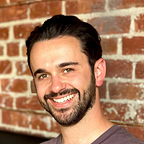To evolve, newsrooms must become more democratic
Democracy isn’t doing so well. And journalism — the institution best suited to improve the state of things — isn’t doing much to help.
Journalists know this, too. At SRCCON:LEAD, a conference on leadership in journalism and technology hosted by OpenNews, Brittany Mayes and I facilitated a session on democratic leadership where attendees highlighted journalism’s potential in democracy: It can inform people, serve as a check on power, and facilitate dialogue across difference.
But they also recognized journalism’s anti-democratic tendencies: It often serves as a gatekeeper to information, rather than a facilitator for it’s exchange.
The general assessment of those gathered? Journalism isn’t serving democracy particularly well.
And that’s because newsrooms aren’t all that democratic.
Asked to place their organization on a spectrum from undemocratic to democratic, most attendees identified their news organizations as generally autocratic.
They described how decision-making isn’t shared across the newsroom and how decisions are made without the input of those affected by them. They pointed to how poorly feedback is received and that there are few pathways to leadership.
Corporate, top-down, or otherwise hierarchical news organizations were identified as undemocratic. But that doesn’t mean they are without pockets or even currents of internal democratic process. Unions, all-staff meetings, financial transparency, and committee-led special initiatives were all regarded as making a news organization more democratic.
That public media tended to have a more democratic process was not lost on attendees. They also highlighted that democracy wasn’t just majority rule on every decision but a process with boundaries that help build consensus.
So, what else can be democratized in a newsroom without changing the masthead? Quite a lot, actually.
Session attendees identified dozens of organizational practices that could be reformed. Everything from the style guide to goal-setting to budgetary decisions.
Here’s a summary of what participants said they would like to see democratized:
Here’s the raw data they submitted for those who’d like to take a closer look:
When asked to drill down and come up with one or two particular newsroom practices they would like to see democratized in their newsroom, here’s some of what the attendees said they would change:
- Survey the staff to understand what stories they would like to produce
- Hold votes to determine editorial agendas
- Conduct a risk assessment and harm analysis on the organization’s reporting
- Establish mechanisms that allow employees to stop stories collectively
- Present and collectively select special projects during an organization-wide pitch day
- Set transparent project metrics that include newsroom satisfaction surveys
- Organize an elected multi-stakeholder ethics board to investigate wrongdoing, organize decision-making, and provide a check on power
These are just a few of the things newsrooms can do to live up to their democratic values. Because it turned out that our session wasn’t the only one focused on democracy and the newsroom. In fact, SRCCON:LEAD was one big exercise in newsroom democratic process.
For example: Attendees of Kayla Christopherson and Allison Lichter Joseph’s session on redistributing power in newsrooms, for example, identified more than 40 ways news organizations can become more participatory.
Meanwhile, Bettina Chang and Annie Chabel’s session on employee evaluation hosted a transparent conversation about measuring performance and collecting feedback in a way that centers the organization’s values in their evaluation process.
Heather Bryant and Shady Grove Oliver led their session’s attendees in an exercise to identify what journalists can learn from disciplines like narrative medicine or just transition to become more inclusive, equitable, and considerate.
And the session run by Mandy Brown and David Yee helped attendees explore opportunities for growth into more conscious and equitable leaders.
The lesson from these and other SRCCON:LEAD conversations is clear: they’re calling on us to recognize that journalists in every corner of the industry and rung of the newsroom want to make their organizations more diverse, equitable, inclusive, and democratic.
And by identifying the opportunities they have to share and build power, they’ll begin to build the networks and infrastructure we need improve journalism and our democracy.
